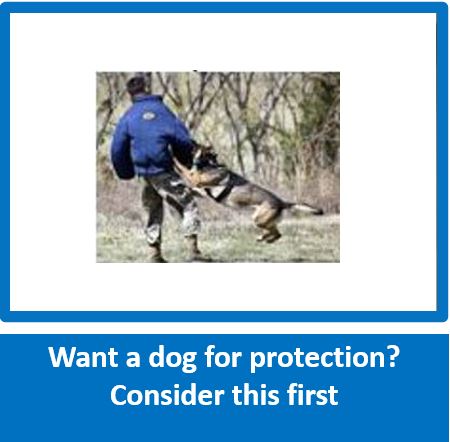
Please visit and LIKE / FOLLOW our Facebook Page and share with family, friends and on your own Facebook page, and ask them to share further – it is only by working together and sharing knowledge and education that we can improve the lives of dogs and assist owners. We do not inundate you with posts – an average of 5 per week, plus one Tip of the Week, and the odd informative post. Thank You!
Life Skills - There Is A Lot More To Them Than You May Think!
Dr Melvyn Greenberg Accredited Animal Behaviour Consultant (ABC of SA™)
Dr Melvyn Greenberg Accredited Animal Behaviour Consultant (ABC of SA™)
.

Puppy socialization classes has been in the media and on the lips of everyone involved in canine activities for over two decades. While those pet owners who fail to socialize, let alone train, their dogs live their lives expounding excuses for their animals’ unruly, unpredictable and unsociable behaviour – and they will, out of sheer laziness or arrogance, live with the problems. “My dog has been digging up the garden for years – he is just like that!” He should never be like that. “My dog growls when you put his food down – he is just greedy and possessive so we try not to interfere with him!” The dog is ruling the roost. “My dog does not like a lead” You have never learnt how to use one – all dogs can be lead-trained. My dog barks like mad when he goes to the vet – I think he wants to attack every dog I sight – so we shout at him, but he doesn’t listen” The dog is, in fact, fearful, over-privileged and unsocialised – shouting at him reinforces the vocalization and he will not listen if there is no respect.
These are daily phrases heard at boarding kennels, grooming parlours, veterinary waiting rooms, dog shows during weekdays and weekends - and at restaurants on Saturday nights!
There are a certain percentage of companion dogs who suffer from the lack of life skills which is to their detriment, when the situation arises, requiring out-of-the-ordinary handling, treatments, restrictions, exposure to strangers and being placed in extraordinary environments.
During puppy socialization it is expected of the trainer to educate the dog-owning public to allow puppies the experience of as many imaginable scenarios as possible, in a positive manner.
Every pup should accept the presence of a bandage on its forelimb or hindlimb for brief periods – to be able to play around with full tolerance of the attached material. This will, hopefully, pre-empt the distressing veterinary hazard of a dog chewing off its bandages after an operation, while being hospitalized with an intravenous drip attached to one of its limbs or a bandage somewhere on the body to protect an area or keep a wound clean. It is frustrating for veterinary staff to keep on replacing bandages, obviously with the application of further restraint measures to prevent ongoing damage which is detrimental to the prognosis of the animal and more expensive for the owner.
Every pup should be crate-trained to teach it tolerance of confined spaces in a pleasurable manner. This will put the dog in good stead for veterinary hospitalization and boarding kennels. Some dogs, particularly Dobermann Pinschers, that have never experienced being caged can, through sheer panic, completely destroy the cages which may well be welded mesh, expanded metal or metal bars. It is beyond belief the amount of destruction one dog can cause through the stresses of claustrophobia. Some dogs that are thus destructive can come off with minor abrasions to their lips or have multiple fractured teeth. The demented state to escape from confinement far over-rides any painful experience in the process – most likely, the endorphins and adrenalin, to mention a few biological chemicals, are being discharged at an enormous rate for this whole process to give the dog relief.
This type of dog’s attitude can not be accurately predicted but can certainly be prevented during puppy orientation classes and basic obedience training.
It is extremely stressful for veterinarians, veterinary nurses and hospital assistants to deal with such patients when the desire to get out far outweighs the professional’s need to keep the dog in. This can render the dog beyond help and have a serious impact on its prognosis. It may be suggested that such an anxious dog should be sedated. It is not always safe to have an animal under continuous sedation without other side-effects. A tranquilized patient requires more intensive observation to ensure continued well-being and to know when to sedate further if recuperation is occurring. Short-term situations may warrant this but not for long-term hospitalization.
Every pet owner should seek professional advice on their dog’s temperament for the purpose of rectifying any potential behaviour risks. Trying to treat a patient in a veterinary consulting or hospital, or trying to bath and groom a pet at a parlour, that has any form of aggression makes life difficult for all concerned – there are incidences where the owners are turned away because of their animal’s attitude. Consideration has to be given to veterinary who need to handle such a dog intensively or during consultation. It is almost impossible to accurately and successfully examine an aggressive dog. Opening its mouth or being in close proximity to its head is totally out of the question. Anywhere one touches the dog tenses so a physical examination is impossible. If the tail is lifted to take temperature, usually the dog defaecates, urinates and ejects its anal sac secretions – a good opportunity for obtaining urine and faeces samples but it is all just one big mess. This is a case where general anaesthesia or neuroleptanalgesia (sedation and analgesia) is required to conduct a detailed investigation which may also include blood collection, x-rays, scanning and scoping – might as well do it while the going is good, and safe! This is not a procedure one can follow too often due to expense and the effect on the dog. It is time-consuming to handle aggressive patients. You, obviously, cannot reason with them. They also do not have enough time in hospital to become accustomed and tolerant towards handling, no matter how much patience and time professional staff has available. Aggressive patients are far more expensive patients – an aspect that every dog owner should be cognizant of when you feel socialization and training is modern hogwash. If veterinary personnel get bitten, when restraint is recommended and the client refuses muzzling, tying up the mouth, severe restraint or sedation, the injured parties have legal recourse in either refusing to treat the pet patient or suing the owners for trauma and disability. There is already a precedent in the legal system where a veterinarian can sue owners for allowing their dog to bite – or having a dog that bites. It is impossible to regularly thoroughly examine aggressive dogs and this renders the dog a much more guarded prognosis. Veterinarians, veterinary nurses and hospital staff and are not immune to being bitten. In fact, working in this field, one may carry odours of other animals which may entice an unexpected aggressive stance. As animal workers one does not want to be bitten as it can cause permanent injury, lengthy time off work and temporary disability – it is only natural to be cautious, especially if one has been badly bitten in the past. It can cause chronic low-grade fear similar to what people feel about hijacking and house robberies in this country. You never know when it is going to hit you and whenever it does it is never pleasant.
Whether the dog is suffering from fear aggression, which can be taught confidence, or dominance aggression, which also has its possibilities for counter-conditioning, it is a socially unacceptable pet lacking life skills.
Then there are those dog owners who carry their dogs everywhere. Toy breeds are acceptable but it is observed, occasionally, where a man will carry his Boerboel or Great Dane in to the consulting room because “the dog does not like a lead”. How does this person think that, if his dog is admitted to a veterinary hospital for treatment, this dog is going to be walked around in the garden to determine certain physiological events e.g. urination, defaecation, mobility etc.? There is no chance that staff is going to carry these dogs around – the dog has four legs and can walk – every dog can be lead-trained, not every owner can be taught that, however. How do these people believe that a patient not lead-trained is going to cope in any animal orientated facility? These incompetent creatures are under more stress because they have to have a crash course in walking on collar and leash. All this stress to pet and vet is avoidable.
People who own aggressive dogs and people who have not taught their dogs any life skills are the first to complain when they are charged an aggravation handling surcharge.
These are daily phrases heard at boarding kennels, grooming parlours, veterinary waiting rooms, dog shows during weekdays and weekends - and at restaurants on Saturday nights!
There are a certain percentage of companion dogs who suffer from the lack of life skills which is to their detriment, when the situation arises, requiring out-of-the-ordinary handling, treatments, restrictions, exposure to strangers and being placed in extraordinary environments.
During puppy socialization it is expected of the trainer to educate the dog-owning public to allow puppies the experience of as many imaginable scenarios as possible, in a positive manner.
Every pup should accept the presence of a bandage on its forelimb or hindlimb for brief periods – to be able to play around with full tolerance of the attached material. This will, hopefully, pre-empt the distressing veterinary hazard of a dog chewing off its bandages after an operation, while being hospitalized with an intravenous drip attached to one of its limbs or a bandage somewhere on the body to protect an area or keep a wound clean. It is frustrating for veterinary staff to keep on replacing bandages, obviously with the application of further restraint measures to prevent ongoing damage which is detrimental to the prognosis of the animal and more expensive for the owner.
Every pup should be crate-trained to teach it tolerance of confined spaces in a pleasurable manner. This will put the dog in good stead for veterinary hospitalization and boarding kennels. Some dogs, particularly Dobermann Pinschers, that have never experienced being caged can, through sheer panic, completely destroy the cages which may well be welded mesh, expanded metal or metal bars. It is beyond belief the amount of destruction one dog can cause through the stresses of claustrophobia. Some dogs that are thus destructive can come off with minor abrasions to their lips or have multiple fractured teeth. The demented state to escape from confinement far over-rides any painful experience in the process – most likely, the endorphins and adrenalin, to mention a few biological chemicals, are being discharged at an enormous rate for this whole process to give the dog relief.
This type of dog’s attitude can not be accurately predicted but can certainly be prevented during puppy orientation classes and basic obedience training.
It is extremely stressful for veterinarians, veterinary nurses and hospital assistants to deal with such patients when the desire to get out far outweighs the professional’s need to keep the dog in. This can render the dog beyond help and have a serious impact on its prognosis. It may be suggested that such an anxious dog should be sedated. It is not always safe to have an animal under continuous sedation without other side-effects. A tranquilized patient requires more intensive observation to ensure continued well-being and to know when to sedate further if recuperation is occurring. Short-term situations may warrant this but not for long-term hospitalization.
Every pet owner should seek professional advice on their dog’s temperament for the purpose of rectifying any potential behaviour risks. Trying to treat a patient in a veterinary consulting or hospital, or trying to bath and groom a pet at a parlour, that has any form of aggression makes life difficult for all concerned – there are incidences where the owners are turned away because of their animal’s attitude. Consideration has to be given to veterinary who need to handle such a dog intensively or during consultation. It is almost impossible to accurately and successfully examine an aggressive dog. Opening its mouth or being in close proximity to its head is totally out of the question. Anywhere one touches the dog tenses so a physical examination is impossible. If the tail is lifted to take temperature, usually the dog defaecates, urinates and ejects its anal sac secretions – a good opportunity for obtaining urine and faeces samples but it is all just one big mess. This is a case where general anaesthesia or neuroleptanalgesia (sedation and analgesia) is required to conduct a detailed investigation which may also include blood collection, x-rays, scanning and scoping – might as well do it while the going is good, and safe! This is not a procedure one can follow too often due to expense and the effect on the dog. It is time-consuming to handle aggressive patients. You, obviously, cannot reason with them. They also do not have enough time in hospital to become accustomed and tolerant towards handling, no matter how much patience and time professional staff has available. Aggressive patients are far more expensive patients – an aspect that every dog owner should be cognizant of when you feel socialization and training is modern hogwash. If veterinary personnel get bitten, when restraint is recommended and the client refuses muzzling, tying up the mouth, severe restraint or sedation, the injured parties have legal recourse in either refusing to treat the pet patient or suing the owners for trauma and disability. There is already a precedent in the legal system where a veterinarian can sue owners for allowing their dog to bite – or having a dog that bites. It is impossible to regularly thoroughly examine aggressive dogs and this renders the dog a much more guarded prognosis. Veterinarians, veterinary nurses and hospital staff and are not immune to being bitten. In fact, working in this field, one may carry odours of other animals which may entice an unexpected aggressive stance. As animal workers one does not want to be bitten as it can cause permanent injury, lengthy time off work and temporary disability – it is only natural to be cautious, especially if one has been badly bitten in the past. It can cause chronic low-grade fear similar to what people feel about hijacking and house robberies in this country. You never know when it is going to hit you and whenever it does it is never pleasant.
Whether the dog is suffering from fear aggression, which can be taught confidence, or dominance aggression, which also has its possibilities for counter-conditioning, it is a socially unacceptable pet lacking life skills.
Then there are those dog owners who carry their dogs everywhere. Toy breeds are acceptable but it is observed, occasionally, where a man will carry his Boerboel or Great Dane in to the consulting room because “the dog does not like a lead”. How does this person think that, if his dog is admitted to a veterinary hospital for treatment, this dog is going to be walked around in the garden to determine certain physiological events e.g. urination, defaecation, mobility etc.? There is no chance that staff is going to carry these dogs around – the dog has four legs and can walk – every dog can be lead-trained, not every owner can be taught that, however. How do these people believe that a patient not lead-trained is going to cope in any animal orientated facility? These incompetent creatures are under more stress because they have to have a crash course in walking on collar and leash. All this stress to pet and vet is avoidable.
People who own aggressive dogs and people who have not taught their dogs any life skills are the first to complain when they are charged an aggravation handling surcharge.




